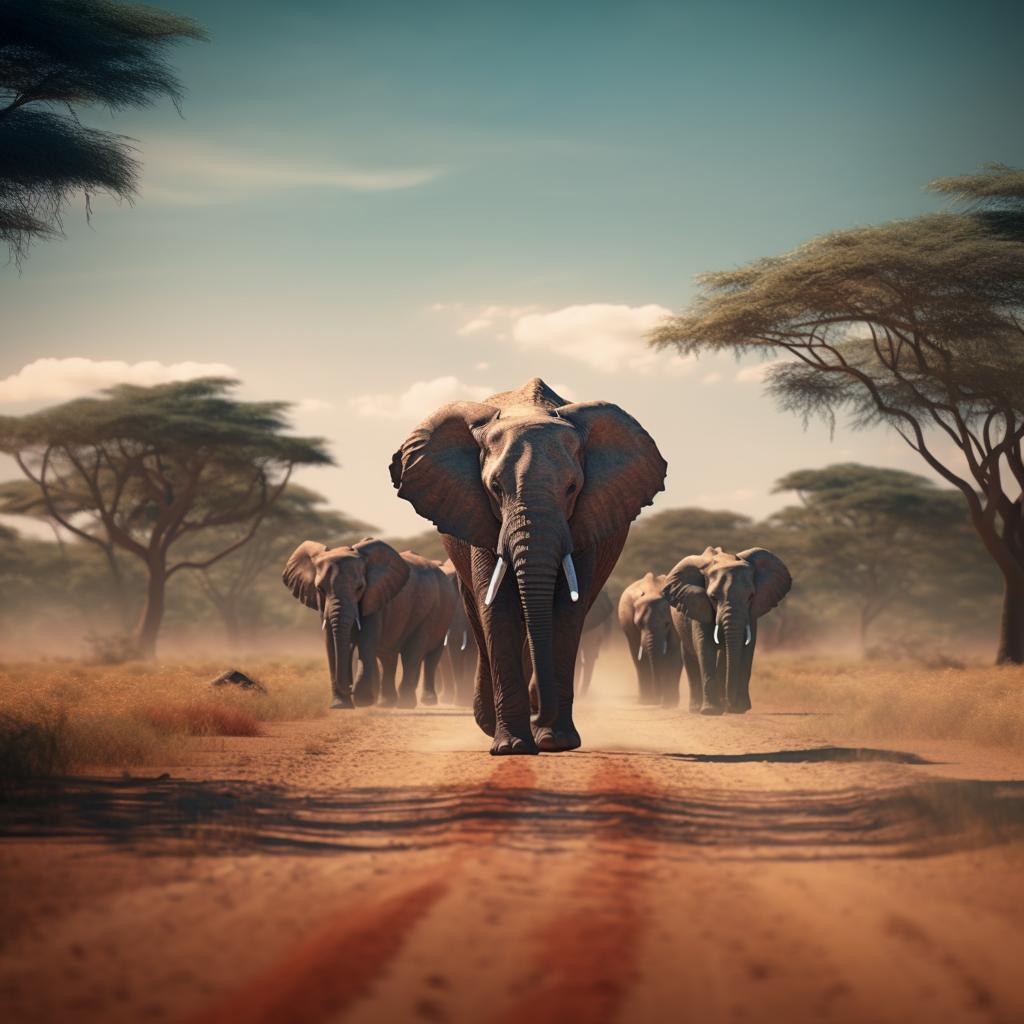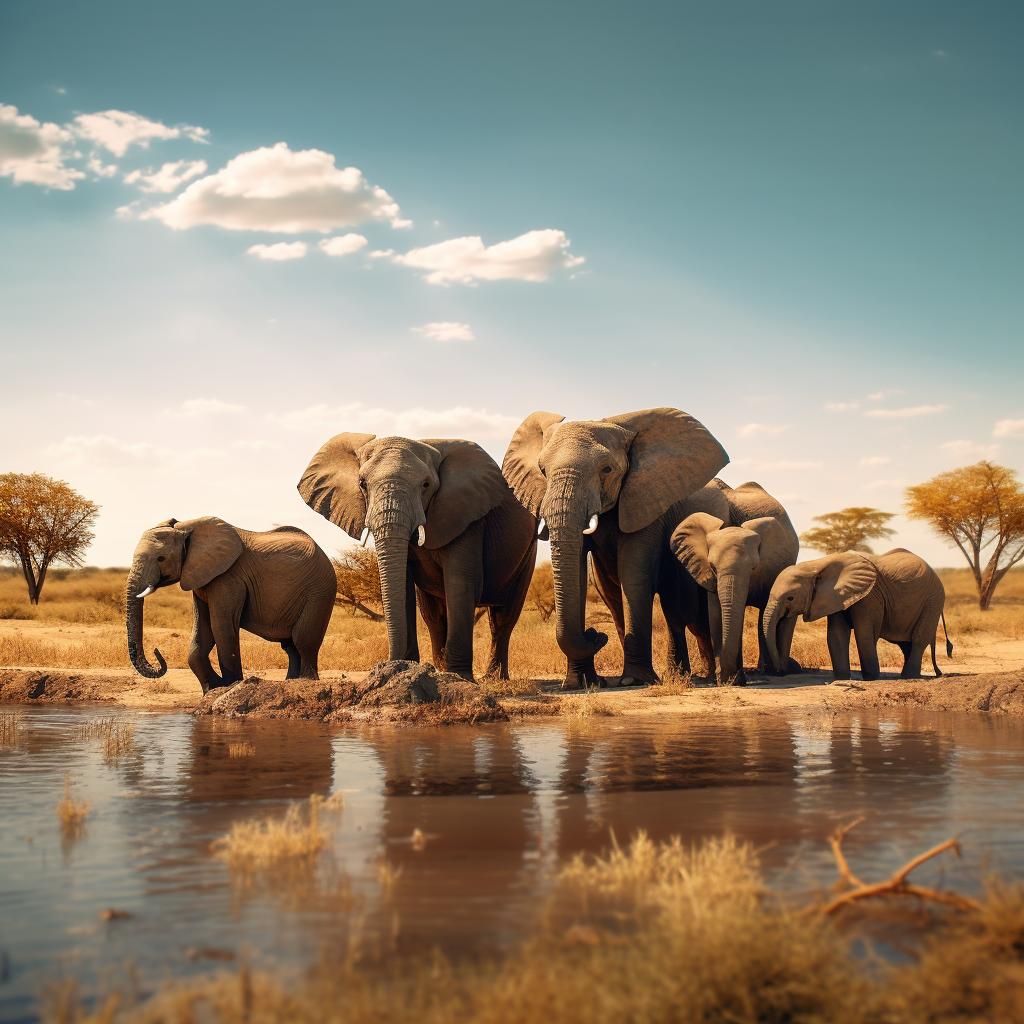Overview
Elephants, the gentle giants of the wild, can grow to incredible heights, reaching up to 13 feet (4 meters) at the shoulder. These magnificent creatures can weigh anywhere from 5,000 to 14,000 pounds (2,268 to 6,350 kilograms), making them the largest land mammals on Earth.

When
The best months if you are planning a trip to see elephants are June, July, August, September and October.
Where
The best countries for spotting elephants in the wild are Kenya, Botswana, Sri Lanka, Zimbabwe and Tanzania.
Diet
Known for their insatiable appetite, elephants have a fondness for vegetation. Their diet mainly consists of grasses, leaves, bark, and fruits. Incredibly, they can consume around 300 pounds (136 kilograms) of food per day to fuel their massive bodies.
Habitat
Elephants are highly adaptable and can be found in a range of habitats, including savannahs, forests, and grasslands. They rely on a regular water source, which influences their movement patterns. These intelligent beings form close-knit social groups and demonstrate complex behaviour within their chosen habitats.
Best Countries To See Elephants
Kenya
Botswana
Sri Lanka
Zimbabwe
Tanzania

Best Time Of Year To See Elephants
In many regions, the dry season is often considered an ideal time to spot elephants. During this period, vegetation becomes sparse, and water sources dwindle, causing elephants to gather around remaining waterholes and rivers.
The dry season typically occurs in different months depending on the location, such as winter months in Africa (June to October) or cooler months in Asia (November to February). Some regions experience seasonal elephant migrations as herds move between different habitats in search of food and water.
Where You Are Most Likely To See Elephants
1. Maasai Mara National Reserve, Kenya: Located in southwestern Kenya, this iconic reserve is part of the larger Mara-Serengeti ecosystem. Known for the Great Migration, it also hosts a significant population of elephants that can be observed throughout the year.
2. Amboseli National Park, Kenya: Situated at the foothills of Mount Kilimanjaro, Amboseli is famous for its stunning views and large herds of elephants. The vast open plains provide an ideal setting to witness elephants against the backdrop of Africa's highest peak.
3. Chobe National Park, Botswana: Located in northern Botswana, Chobe National Park boasts one of Africa's largest elephant populations. Visitors can enjoy unforgettable boat safaris along the Chobe River, where elephants gather to drink and bathe.
4. Udawalawe National Park, Sri Lanka: This park in southern Sri Lanka is renowned for its high density of wild elephants. With open grasslands and a reservoir, it offers excellent opportunities for close encounters with these majestic creatures.
5. Minneriya National Park, Sri Lanka: As mentioned earlier, Minneriya National Park is famous for "The Gathering," an incredible spectacle where hundreds of elephants congregate around the Minneriya Tank during the dry season (June to September).
6. Mana Pools National Park, Zimbabwe: Situated along the Zambezi River, Mana Pools is a UNESCO World Heritage site known for its unique beauty and diverse wildlife. Elephants are a common sight, particularly during the dry season when they gather near the river.
7. Tarangire National Park, Tanzania: Located in northern Tanzania, Tarangire is renowned for its large elephant herds, often seen near the Tarangire River. The park's picturesque landscapes and baobab-dotted plains add to the allure of elephant encounters.


